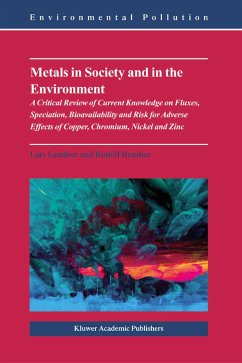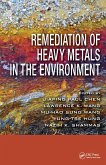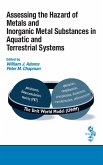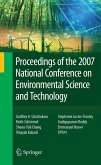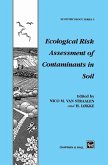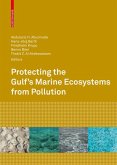In 2002, the Swedish Metal Information Task Force (MITF) engaged the Environmental Research Group (MFG) to update previous monographs on copper, zinc and major alloying metals (such as chromium, nickel and molybdenum) in society and in the environment. This book presents new results on metal fluxes from society to the environment, on metal speciation in water, soil and sediment, and its interpretation in terms of mobility, biological uptake and toxicity. The scientific fundamentals of new approaches, like the Acid Volatile Sulphide (AVS) concept to predict metal bioavailability in sediments, and the Biotic Ligand Model (BLM) to calculate the toxicity of metals to aquatic organisms, are critically evaluated, with a focus on copper, nickel, zinc, and, in part, chromium.
Recent scientific advances now offer an improved understanding of the mechanisms and factors controlling the intricate behaviour of trace metals, their interactions, uptake and effect in natural systems. Traditional risk assessment methods usually built on quite crude toxicity tests done in unrealistic "laboratory waters", and did not consider natural conditions. In contrast, modern approaches now increasingly involve the full utilisation of site-specific factors, which are decisive for the formation of bioavailable and toxic metal forms.
Audience
This book provides excellent guidance to both scientists focusing on the assessment of the ecological risk of metals, and to authorities, decision makers in industry, educational staff and the interested public concerned with the occurrence and fate of trace metals.
Recent scientific advances now offer an improved understanding of the mechanisms and factors controlling the intricate behaviour of trace metals, their interactions, uptake and effect in natural systems. Traditional risk assessment methods usually built on quite crude toxicity tests done in unrealistic "laboratory waters", and did not consider natural conditions. In contrast, modern approaches now increasingly involve the full utilisation of site-specific factors, which are decisive for the formation of bioavailable and toxic metal forms.
Audience
This book provides excellent guidance to both scientists focusing on the assessment of the ecological risk of metals, and to authorities, decision makers in industry, educational staff and the interested public concerned with the occurrence and fate of trace metals.
Dieser Download kann aus rechtlichen Gründen nur mit Rechnungsadresse in A, B, BG, CY, CZ, D, DK, EW, E, FIN, F, GR, HR, H, IRL, I, LT, L, LR, M, NL, PL, P, R, S, SLO, SK ausgeliefert werden.

